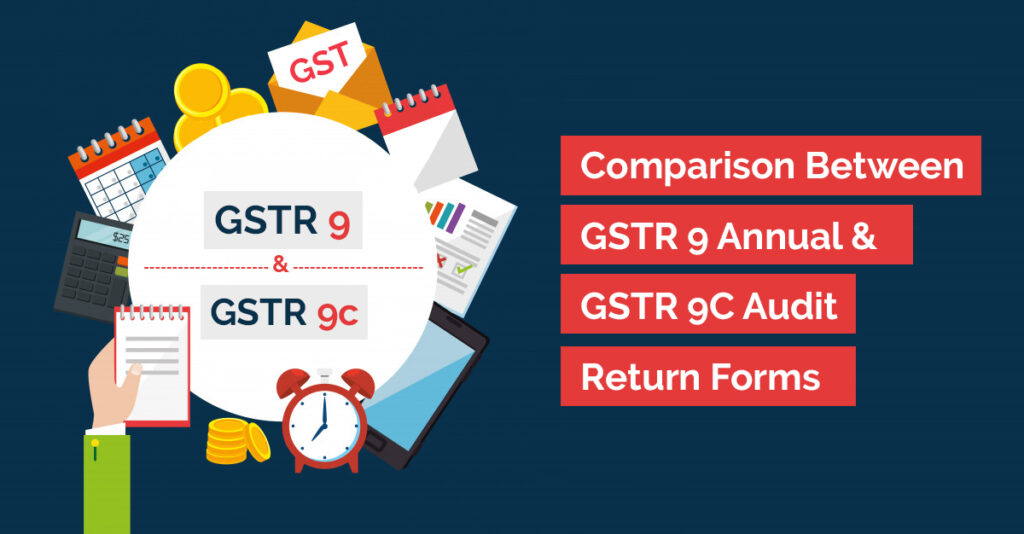Digital is one word that would be synonymous with the current year in India. From GSTN to the e-Way Bill, the finance sector, by far more than any other Industry, went through the most aggressive digital; makeover in recent years.
For better or worse, we must now accept the fact that 2022 was the year when India took a major leap towards s digital economy. But the year is not over yet and there is one small but very important event left in the tax calendar i.e. GSTR-9 and GSTR-9C.
The GSTR-9 form is an annual return that has to be filed by all registered taxable persons under GST. The GSTR-9C is the GST reconciliation Statement for a particular FY on or before 31st December. The reconciliation must also be certified by a CA for the companies having a turnover of more than 5 crores.

What is GSTR 9?
GSTR 9 is an annual return that must be filed by all regular taxpayers registered under GST. It provides a summary of the outward and inward supplies made during the financial year and the taxes paid. It also contains information related to Input Tax Credit (ITC) claimed, ITC reversed, and ITC refunded.
GSTR 9 is an annual return form that is filed by registered taxpayers who have opted for the regular scheme. It is a consolidation of all the monthly or quarterly returns that the taxpayer has filed during the financial year. GSTR 9 contains details of sales, purchases, and tax paid during the year. The form is divided into six parts, each requiring specific information related to the taxpayer’s business.
Who needs to file GSTR 9?
Every taxpayer registered under GST, except for those registered under the composition scheme, must file GSTR 9. The following are the categories of taxpayers who must file GSTR 9:
- Regular taxpayers whose annual turnover exceeds Rs. 2 crores in a financial year.
- Casual taxpayers and non-resident taxpayers.
- Input service distributors (ISDs)
- Those who were previously registered under the Goods and Services Tax (GST) but have since surrendered their registration.
What is GSTR 9C?
GSTR 9C is a reconciliation statement that must be filed along with GSTR 9. It is mandatory for taxpayers whose annual turnover exceeds Rs. 5 crores in a financial year. GSTR 9C reconciles the information provided in GSTR 9 with the audited annual financial statements of the taxpayer. The reconciliation statement helps to ensure that the information provided in GSTR 9 is accurate and complete.
GSTR 9C contains a reconciliation of the taxpayer’s turnover, tax paid, and ITC claimed in the financial year with the audited annual financial statements of the business. It is certified by a Chartered Accountant or a cost accountant, and it is mandatory for taxpayers to file GSTR 9C along with GSTR 9.
Who needs to file GSTR 9C?
The following categories of taxpayers must file GSTR 9C:
- Taxpayers whose annual turnover exceeds Rs. 5 crores in a financial year.
- Those who are required to get their accounts audited under any law.
Simple to Understand Comparison Between GSTR 9 & GSTR 9C
GSTR 9 and GSTR 9C Exemptions
The following individuals are exempted from filing the GSTR-9 Annual Return
- Casual Taxable Person
- Input service distributors
- Non-resident taxable persons
- Persons collecting taxes under Section 52 of the GST Act
- Person deducting taxes (TDS) under section 51 of the GST Act.
- Online Information and Database Access Retrieval Service
In the case of GSTR-9C, in addition to the individuals belonging to any one of the above set of individuals exempted from GSTR-9, as well as Composition Dealers and registered taxpayers with an annual turnover not exceeding Rs 2 Crores for a given FY need not submit the GSTR-9C reconciliation statement.
FAQs
Is there any distinction between Form GSTR-9 & GSTR-9C?
- Yes, the distinction between the 2 forms is that GSTR-9 is to be furnished via all the regular assessee. And on the other side Form, GSTR9C is to get furnished via those assessee’s whose yearly turnover is Rs 2 cr or more towards that fiscal year.
- In GSTR-9C the assessee is required to obtain their account audited via CA and furnish a copy of the audited yearly accounts & reconciliation statements, beneath section 44(2) of the CGST Act.
A taxpayer did not furnish the yearly return GSTR-9. Could he furnish the Form GSTR-9C?
No, he would only furnish his GSTR-9C if he furnished Form GSTR-9 towards the tax duration.
